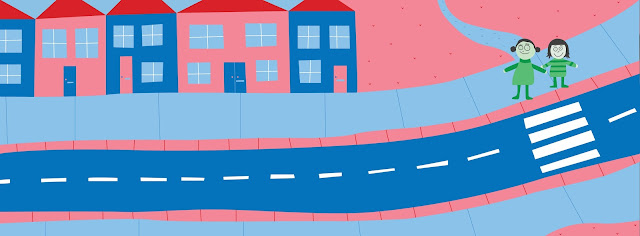Photographs of the final physical leaflet and stickers:
The leaflet was print on IPRINT Digital Silk 300 gsm paper and laminated to enable the stickers to be applied and removed without damaging the leaflet itself. The stickers were originally printed on two different types of sticker paper - a matte white paper and a clear plastic sheet - but the final stickers that were used were the plastic versions, as they would be more durable when used by children.
Feedback from the final critique for this public information leaflet was largely positive. In order to gain a wide variety of feedback I targeted specific groups of people, some with younger siblings and some without. It was agreed by both that the designs were more obviously engaging to a young audience, rather than to teenagers, and the level of interaction would be appropriate for the audience (children aged 3-5). The leaflet was also appropriate for its intended distribution within schools: it would allow young children to learn the Green Cross Code in a learning environment, but would also allow them the option to take it home to show and learn with parents. If children did not have access to the leaflet through a school, it would also be appropriate to send out to families via post, although if this was the case, a specially designed envelope would also have to be created to allow for its particular shape and thickness, and its small parts.
After finalising my designs, I also consulted with the head teacher of a first school in regards to the use of colours, typefaces and content. It was agreed that the overall style of the leaflet felt appropriate for the audience, and that intentionally creating a leaflet for children of ages 3-5 allowed for more audience-specific content. The colours were engaging, and the distinction between the red/blue side and the green side created a clear definition between information and instruction, and practice. The typeface would be legible to young children at the used pt size, and the use of a smaller typeface for the adult instructions allowed more information to be printed without creating a distraction for the younger user. A problem was identified with the size of the stickers, as some children with disabilities that affect movement and dexterity could find them too small or difficult to apply and remove. However, the additional online game created a solution to this as it would allow these children a different way of learning that was more appropriate to their abilities, as well as allowing all users to continue learning and using the game outside of the leaflet, outside of a school environment, and in their own time.
I used Adobe Illustrator to create the entirety of my leaflet as the vector graphics allow any and all images to be rescaled to any size within the programme without pixelation, meaning any editing or transferring of the designs can be done without the loss of quality.
The physical version of the leaflet that would be sent out would have an altered folding pattern, with the fold that creates the front cover being re-creased 5mm towards the centre of the leaflet. This would ensure that the Green Cross Code design on the front cover would be central. However at the time of creation only one leaflet could be laminated, due to semi-functional machinery, and so only one final version of the leaflet could be produced.



















































